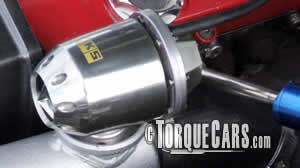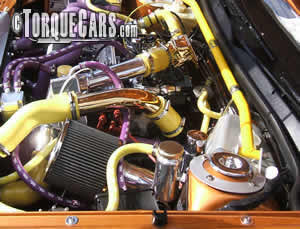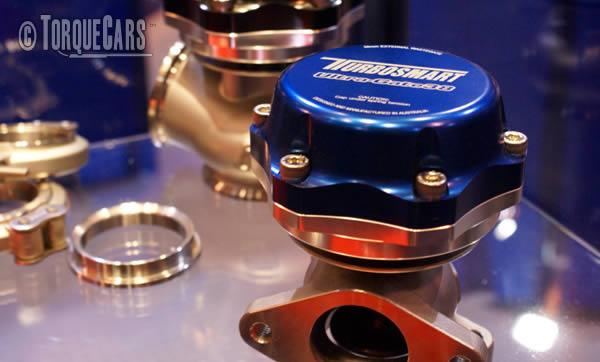Blow off valves, dump valves and screamer pipes
"Do I look BOV'd!"
 Blow off valves and dump valves.
Blow off valves and dump valves.
When the throttle is closed (when you lift off the accelerator) in a turbo driven engine there is a build up of pressure as forced air is still coming from the turbo.
Lifting off the throttle is a lot like putting a plug in the sink - the flow through is stopped and water would just build up and overflow the sink.
In a car as the engine is not burning fuel it is not using oxygen either so the whole turbo system would be under pressure and cause either split pipes or cause damage to the turbo itself as air tries to rush backwards through the turbo making a clattering noise known as compressor surge, sometimes causing the turbine to spin in reverse and this is a massive strain on the bearings.
A release valve is needed and this helps prolong the life of your turbo and allows a faster response.

Nearly all turbo cars are fitted with some kind of simple relief valve to avoid these problems. The standard valve usually releases the pressure into the intake before the turbo which is not pressurised and if the throttle is reapplied the partially pressurised air is efficiently sucked back in. The BOV or blow off valve also referred to as a dump valve or vent valve quite simply vents the excess pressure into the atmosphere with a pfsssst sound, a whistle, a clatter or similar noise. A wide variety of BOV types are available from leading car part suppliers, ask around in our forum to see which ones perform the best on your particular vehicle.
Some ECU's in a closed loop engine system fitted with a mass air flow sensor are confused by this sudden missing pressure which has vanished and the engine can briefly run rich causing hesitancy, juddering or stalling. The more boost you are running the more problematic this effect can be.
A screamer pipe is fitted to the wastegate and only comes on when the turbo is at full boost, not when you back off the throttle (a screamer pipe is fitted to the Ferrari F40 which looks like a third exhaust pipe in the back).
Screamer pipes are extremely noisy and should technically be looped into the exhaust pipe system just before the cat.
With some clever design these can keep the turbo spinning a little longer and allow for a faster back on the throttle response helping to eliminate turbo lag. Screamer pipes which vent into the atmosphere are extremely loud sounding like a jet engine and due to the excessive noise they are banned from most tracks with noise restrictions and as they bypass the cat the car effectively fails any emissions test.
Please Check out my YouTube channel, we're regularly adding new content...
PLEASE HELP: I NEED YOUR DONATIONS TO COVER THE COSTS OF RUNNING THIS SITE AND KEEP IT RUNNING. I do not charge you to access this website and it saves most TorqueCars readers $100's each year - but we are NON PROFIT and not even covering our costs. To keep us running PLEASE Donate here
If you liked this page please share it with your friends, drop a link to it in your favourite forum or use the bookmarking options to save it to your social media profile.
Feedback - What do You Think?
Please use our forums if you wish to ask a tuning question, and please note we do not sell parts or services, we are just an online magazine.
Help us improve, leave a suggestion or tip
Please watch this video and subscribe to my YouTube channel.


 Click to accept YouTube Cookies & Play.
Click to accept YouTube Cookies & Play.